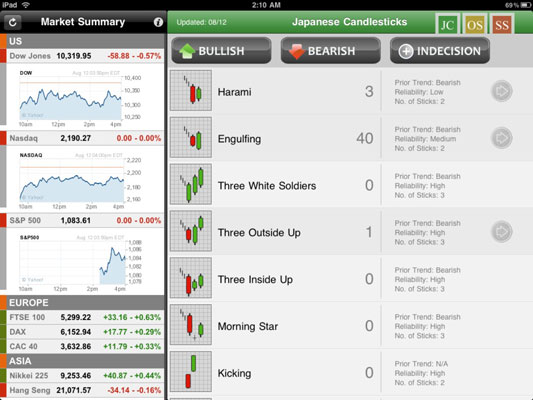I am fascinated by the artificial intelligence (AI) technology. It excites me but at the same time it scares me. I worry about becoming an obsolete species on the earth. Even though I tend to believe that it will be human being's ultimate fate like dinosaurs, but this time it will be AIs who may replace us! Nevertheless, AI technology promises to take the civilization much further. Does cloud computing share any link with AI technology? Can AI affect cloud computing or vice versa? Please remember that the current AI technologies are not even close to what scientists and researchers predict it to be. Watch the video to find out the current state of AIs:
Its functionality is extremely limited even though it still affects the everyday world especially the world wide web in a big way. I wanted the last post of this blogging cycle to be looking towards the future so that you will have some thoughts for the week. Here is a video that provides research findings on how AI can perform surveillance.:
Let us start with a recent announcement from Google. Machine Learning is considered to be a form of AI. It can learn while processing data and has the ability to be proficient in a particular application over time. Google announced a new machine learning engine (http://econfuture.wordpress.com/2010/08/31/google-cloud-computing-machine-learning-and-self-destruction/) that will be offered as a part of Google's cloud computing strategy. It promises to perform customer sentiment analysis, message routing decisions, recommendations, suspicious activity detection etc. In other word it can make some ambiguous decisions which computers so far has not been able to do. Thus it can take over some business activities which have been performed by human beings so far. This new application will make an organization flatter by eliminating middle managers and will enhance the capabilities of low-wage offshore workers. Essentially, this new engine will motivate companies to move its IT needs to Google cloud. Here is a video that explains the importance of AI in businesses:
We have been concentrating on how cloud computing can enable small and medium businesses and start ups to compete with large enterprises by transforming the IT infrastructure cost from a fixed cost to a variable cost. But this new Google offering may shake the ecosystem again. It will empower the large and complex organizations to streamline the workforce hence will make it easier to run. The large corporations will essentially have similar organizational structure as the SMBs but with other assets such as more capital, machines and intellectual properties.
Cloud computing technology emphasizes on storing the applications, processes and data in the same cloud. Thus AIs can access an extremely large volume of data and can use unlimited computing power to make its decision. Traditional IT infrastructures, though extremely efficient, still cannot compete with clouds in this aspect. Thus cloud computing will help AIs to make better predictions (http://omarsbrain.wordpress.com/2010/09/17/artificial-intelligence-raining-from-%E2%80%9Cthe-cloud%E2%80%9D-on-ubiquitous-computers/).
It seems like cloud computing and AI can help each other to reach some of their promised potential in the future and a lot of researchers in both fields are working towards it. I will finish this post by letting you watch a video on how IBM's Watson, which is capable of answering ambiguous questions to some extent, functions:
Its functionality is extremely limited even though it still affects the everyday world especially the world wide web in a big way. I wanted the last post of this blogging cycle to be looking towards the future so that you will have some thoughts for the week. Here is a video that provides research findings on how AI can perform surveillance.:
Let us start with a recent announcement from Google. Machine Learning is considered to be a form of AI. It can learn while processing data and has the ability to be proficient in a particular application over time. Google announced a new machine learning engine (http://econfuture.wordpress.com/2010/08/31/google-cloud-computing-machine-learning-and-self-destruction/) that will be offered as a part of Google's cloud computing strategy. It promises to perform customer sentiment analysis, message routing decisions, recommendations, suspicious activity detection etc. In other word it can make some ambiguous decisions which computers so far has not been able to do. Thus it can take over some business activities which have been performed by human beings so far. This new application will make an organization flatter by eliminating middle managers and will enhance the capabilities of low-wage offshore workers. Essentially, this new engine will motivate companies to move its IT needs to Google cloud. Here is a video that explains the importance of AI in businesses:
We have been concentrating on how cloud computing can enable small and medium businesses and start ups to compete with large enterprises by transforming the IT infrastructure cost from a fixed cost to a variable cost. But this new Google offering may shake the ecosystem again. It will empower the large and complex organizations to streamline the workforce hence will make it easier to run. The large corporations will essentially have similar organizational structure as the SMBs but with other assets such as more capital, machines and intellectual properties.
Cloud computing technology emphasizes on storing the applications, processes and data in the same cloud. Thus AIs can access an extremely large volume of data and can use unlimited computing power to make its decision. Traditional IT infrastructures, though extremely efficient, still cannot compete with clouds in this aspect. Thus cloud computing will help AIs to make better predictions (http://omarsbrain.wordpress.com/2010/09/17/artificial-intelligence-raining-from-%E2%80%9Cthe-cloud%E2%80%9D-on-ubiquitous-computers/).
It seems like cloud computing and AI can help each other to reach some of their promised potential in the future and a lot of researchers in both fields are working towards it. I will finish this post by letting you watch a video on how IBM's Watson, which is capable of answering ambiguous questions to some extent, functions:






.jpg)







.jpg)


.jpg)












